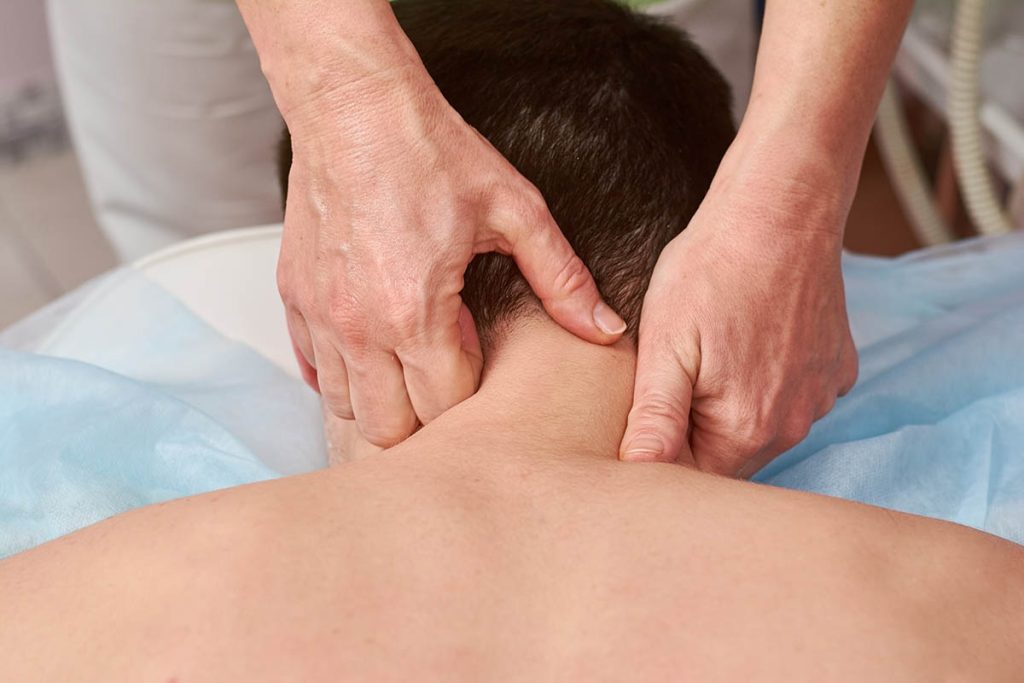Many problems we’ve seen here at the clinic over the years, especially neck, upper back and shoulder problems, can be attributed largely to poor breathing technique. That’s right! Surprisingly, the way you breathe can have profound impacts on the muscles and joints of your neck, shoulders and upper back.
If you’re breathing in a way that’s making these muscles become tight and overworked, this can contribute to various problems such as shoulder injuries, neck pain and stiffness, and headaches, just to name a few.
In a previous blog we went through the technique of optimal breathing, and how to do this as deep breathing exercises that can help improve your breathing technique.
These exercises also have many other benefits. Below, we describe a selection of the known benefits of deep breathing exercises.

Reduces Spinal Stiffness
Our ribs form joints at the back with our thoracic spine. When we breathe, especially when we take a deep breath, the movement of the ribs from chest expansion, along with the change in shape of our thoracic cage, causes all the vertebral joints throughout our thoracic spine to also move. This makes deep breathing exercises a great way to mobilise our spinal joints and to help decrease spinal stiffness.
Improves Posture
When you fill your lungs with air, it makes your spine move into a more optimal position. You can see this for yourself: take a deep breath and notice how your body starts to straighten up during the process. When you take a deep breath, your upper body has to align a certain way to allow you to fill your lungs properly, and that particular alignment also happens to be an optimal posture for your spine.
Decreases stress and Lowers Blood Pressure
When we take deep, good quality breaths, it activates what’s called the parasympathetic nervous system. This is the division of our autonomic nervous system that decreases the stress response and acts to reduce our heart rate, dilate our blood vessels, and lower blood pressure. In turn, this also improves other processes such as digestion.
Deep breathing exercises lower the cortisol level in your body, which is the “stress hormone”, and cause the release of endorphins, which is the “feel-good” chemical of our body.

Relieves Pain
Those endorphins mentioned above are a natural pain-killer created by the body, and deep breathing exercises facilitate the release of endorphins into the body.
Detoxifies The Body
Deep breathing exercises also help to detoxify your body. It does this by stimulating what’s called the lymphatic system. This system removes toxins from our body. The lymphatic system relies on our breathing’s mechanics to function effectively, so deep breathing exercises facilitate this.
Facilitates Cardiac Function
The negative pressure created in your thorax with inspiration allows venous blood to more easily return to your heart, allowing your heart to function more effectively.

Improves Immunity
When blood is properly oxygenated, it carries and absorbs nutrients and vitamins more efficiently, allowing your immune system to function better.
Increases energy levels
This oxygenation of your blood also increases your energy levels, so deep breathing exercises improve your energy levels.
Alkalises Your Body
Deep breathing is also thought to assist in alkalising your body, decreasing the harmful effects of acidity and inflammation throughout the body.
Decreases Anxiety And Insomnia
A growing number of studies show that deep breathing exercises also have positive impacts on mental health problems such as anxiety and insomnia.
We’ve just touched on only a selection of the many benefits that breathing exercises can have. It’s amazing that such a simple exercise can help you in so many ways!
Check out our previous blog on the technique of deep breathing exercises.











